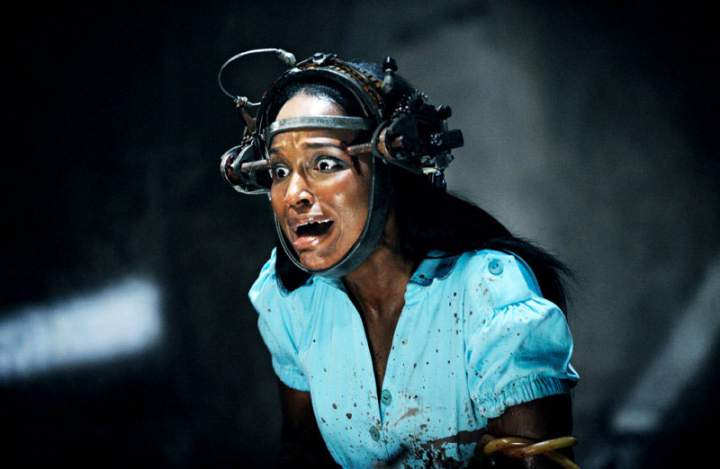Culture
Revisiting The Rotten: Saw VI

As an unabashed fan of gratuitous gore and horrible horror movies, there has always been one subgenre that I’ve never quite understood: the torture porn film. I’m not sure if it’s the half-hearted characterization of already terrible characters as a means to justify the violence, or the implausible and truly extraordinary situations that most of these victims find themselves in, but from the early days of Hostel on, I just haven’t been able to muster up enough passion or fervor to give a shit. That is, ultimately, the worst offense of the torture porn film: how it frames extreme violence in a way that doesn’t make me uncomfortable or even phase me. It just bores me. Now, I know what you’re thinking, and no, I’m not a sociopath. I’ve never experimented with torturing animals, or any of the other early warning signs of a serial killer. The subgenre has just never really done it for me.
Then 2009 came around. For anyone keeping track, 2009 was the year that saw the release of the sixth installment of the notorious Saw franchise. With promising indie beginnings, the first film in the series put a moral and ethical slant to the average horror film. Over the course of the next few movies, the Saw movies devolved into bloody messes of disjointed time, poorly-written characters and complicated traps that put Rube Goldberg to shame. But Saw VI gave audiences something different. It gave us something intelligent. It gave us something profound. It gave us something shockingly topical. In Saw VI, the infamous Jigsaw killer (Tobin Bell) and his disciples tackled healthcare.
As the political debate over affordable healthcare and the outlandish claims of “death panels” flooded the nightly news, Patrick Melton and Marcus Dunstan (the writers of the film) and director Kevin Greutert saw an opportunity. With a single film, they breathed intelligence and relevance into a dying franchise. Unfortunately, critics didn’t see it this way, ultimately awarding it a 40% on Rotten Tomatoes with a mere 26 Fresh reviews. Some of the Rotten reviews were pretty vicious, with Entertainment Weekly’s Owen Glieberman citing its attempts at political relevance as part of its downfall. While now would be an appropriate opportunity to insult the writing of Entertainment Weekly, a magazine that can’t even be given away with purchase of a DVD at Best Buy, I’ll do my best to stay on track.
Saw VI, being the sixth installment of a maligned franchise, was positioned at a disadvantage, one seemingly impossible to overcome. There are criticisms like Glieberman’s, which fault the film for trying something new. Then there are critics like Variety’s Rob Nelson, who referred to the film as “so frighteningly familiar that it could well be called Saw It Already.” Don’t get me wrong. I’m normally one of those detractors, who accuse the Saw series of being manipulative and poorly written, but when it’s positioned as “too much of a new thing when we’ve come to accept a standard” and “not original enough,” it’s hard to imagine this movie could have succeeded in the eyes of any critics.
Fortunately for Greutert and its team of writers, I will defend Saw VI ‘til death. Saw VI brought just enough to the table to revamp the series without completely kicking its diehard fans in the teeth. For those who are not typically fans of the franchise, much like myself, there is an actual story to the film. Not one of those “what are we doing here?” mysteries that no one cares about, like earlier installments in the series. This film fleshes out Jigsaw in a way that is true to his maniacal ramblings, but also helps us to understand who he is, what he has become and how he got there. Honestly, more than any other film in the franchise, Saw VI belongs to Jigsaw.
Still, the people that keep showing up for the blood spray that they have come to expect from the series will not be disappointed. There’s enough guts and glory to go around when the film somehow manages to combine its bloodlust with intelligent commentary. While most of the traps aren’t as laughably elaborate as in previous films and the following Saw VII: The Final Chapter, they are intricate enough to keep the average viewer interested.
Most importantly, Saw VI, although notably different from other films in the series, never feels as if it is pandering or preaching. It gives a taste of both worlds to its audience, enough to dissuade the usual torture-porn-hating critic within me while giving viewers the carnage that they’ve come to expect. Ultimately, Saw VI is a return to the form of cultural commentary in the horror film, in a franchise that was beginning to feel outdated.